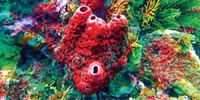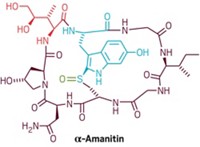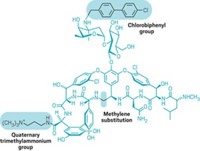Advertisement
Grab your lab coat. Let's get started
Welcome!
Welcome!
Create an account below to get 6 C&EN articles per month, receive newsletters and more - all free.
It seems this is your first time logging in online. Please enter the following information to continue.
As an ACS member you automatically get access to this site. All we need is few more details to create your reading experience.
Not you? Sign in with a different account.
Not you? Sign in with a different account.
ERROR 1
ERROR 1
ERROR 2
ERROR 2
ERROR 2
ERROR 2
ERROR 2
Password and Confirm password must match.
If you have an ACS member number, please enter it here so we can link this account to your membership. (optional)
ERROR 2
ACS values your privacy. By submitting your information, you are gaining access to C&EN and subscribing to our weekly newsletter. We use the information you provide to make your reading experience better, and we will never sell your data to third party members.
Synthesis
Slimming vancomycin synthesis to make it big
New shorter synthesis makes way for scale-up
by Leigh Krietsch Boerner
September 19, 2020
| A version of this story appeared in
Volume 98, Issue 36

Like many antibiotics, vancomycin, used to treat methicillin-resistant Staphylococcus aureus, has an antibiotic-resistance problem. In earlier studies, Dale Boger designed a resistance-free version by changing one crucial atom. However, the synthesis involved 25 steps and could not be scaled up to make enough quantities to be tested. Now, Boger and coworkers at Scripps Research in California have streamlined their vancomycin synthesis, reducing it to 19 steps (J. Am. Chem. Soc. 2020, DOI: 10.1021/jacs.0c07433). This new, scalable design brings key challenging aspects of the synthesis under control, enabling industry chemists to potentially use it to make large quantities of the improved antibiotic. Because these modified versions remain active against bacteria, they need to go through clinical development before they’re deemed safe to use on people. “Enough material will certainly be able to be made this way to see if they live up to expectations,” Boger says. One of the tricky parts in making vancomycin is dealing with the three components in the core that are atropisomeric—isomeric because of a bulky part of the compound that can’t rotate. In the new synthesis, the researchers changed the design to make a single diastereomer of the core structure, eliminating the need for time-consuming purification. Boger has been working on this problem for 30 years. “Up to this point, it has been viewed as beautiful science but probably never going to be translatable because you can’t make them in the amounts needed,” he says. “Now we have the capability of doing that.”





Join the conversation
Contact the reporter
Submit a Letter to the Editor for publication
Engage with us on Twitter